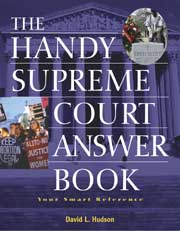President of the Day
Which president appointed two cabinet members who went on to win Nobel Peace Prizes?
- He earned renown for supplying trapped soldiers at nineteen years old.
- He was killed by an self-avowed anarchist.
- He defeated the candidate called the "Great Commoner," twice for his presidency.
- He successfully waged the Spanish-American War.
 William McKinley
William McKinley
Which members of McKinley's cabinet later won a Nobel Peace Prize?
Theodore Roosevelt--McKinley's second vice president--won the Nobel Peace Prize in 1906 when, as president, he negotiated an end to the Russo-Japanese War. Elihu Root--McKinley's second secretary of war--also won the Nobel Peace Prize in 1912 for his efforts in attempting to bring different countries together for arbitration purposes. Root replaced Russell A. Alger as secretary of war after McKinley asked for Alger's resignation. Root later served as secretary of state under Theodore Roosevelt. Root lived to be more than ninety years of age.
How did McKinley distinguish himself with heroism during the Civil War?
At the Battle of Antietam in September 1862 some of the Union soldiers were trapped and not able to cross the river with their fellow soldiers. The nineteen-year-old McKinley, serving as commissary to the unit, loaded a wagon and rode back to give food and drink to the trapped soldiers. He drove the wagon through hostile Confederate gunfire and completed his mission successfully. McKinley narrowly missed meeting his end, as his wagon was hit by Confederate cannon fire.
Who killed William McKinley?
Leon F. Csolgosz shot President McKinley on September 6, 1901, in Buffalo, New York, at a concert hall named The Temple of Music. McKinley was attending the Pan-American Conference there. Csolgosz was a self-avowed anarchist, who believed that McKinley represented an oppressive government that exploited the working class. McKinley died eight days later on September 14, 1901.
Csolgosz was not a formal member of the Anarchist party but he attended several lectures and speeches by the group. He particularly enjoyed a speech by noted anarchist Emma Goldman. Historians believe that Csolgosz was inspired by the assassination of the King Umberto I of Italy by Gaetano Bresci.
Csolgosz stood trial later that month. A jury convicted him and recommended a sentence of death. He was executed on October 29, 1901. His last words reportedly were: "I killed the president because he was the enemy of the good people--the good working people. I am not sorry for my crime."
Whom did McKinley defeat twice to win the presidency?
McKinley defeated a thirty-six-year-old lawyer who had practiced in Illinois and Nebraska named William Jennings Bryan, a talented attorney who argued many times before the United States Supreme Court. Known as the "Great Commoner," Bryan advocated the free-silver cause, which would call for the federal government to allow farmers and debtors to deposit bullions and receive silver coins in return. Essentially, it was a policy that favored those in debt (which included many farmers) over the investors (the banks). Bryan captured the Democratic Party nomination three times--in 1896, 1900, and 1908.
McKinley defeated Bryan in both the election of 1896 and 1900. In 1896, McKinley won the electoral vote count 271to176 in 1896, and 292to155 in the election of 1900.
What major war did the U.S. successfully wage during McKinley's presidency?
The United States prevailed over Spain in the Spanish-American War of 1898. For a time McKinley resisted growing public sentiment for the U.S. to stop Spain from perpetrating alleged atrocities in nearby Cuba, including hauling civilians into concentration camps. Some leading journalists led the call for McKinley to initiate military action. A cataclysmic turning point occurred with the explosion and subsequent sinking of the U.S.S. Maine, a U.S. warship sent to Havana, Cuba. The circumstances surrounding the destruction of the ship remain cloudy. Whatever the cause, the effect was that McKinley asked Congress for a declaration of war in April 1898.
Congress agreed by a wide margin in the House and a narrow margin in the Senate. U.S. armed forces dominated, notably Theodore Roosevelt and his band of so-called "Rough Riders" who won the Battle of San Juan. The battle earned Roosevelt national hero status and ultimately the vice presidency.
By a peace agreement, the United States gained control of Spanish interests in Guam, Puerto Rico, and the Philippines. Guam and Puerto Rico remain U.S. territories to this day. U.S. occupation in the Philippines led to the Philippine-American War, which lasted several years beginning in 1899. It lasted until the administration of President Theodore Roosevelt.
From The Handy Presidents Answer Book, Second Edition by David L. Hudson, Jr., JD., (c) Visible Ink Press(R) More than 1,600 things you never knew about our nation's leaders
| < Previous Fact | Next Fact > |
Dig deeper with these related titles:
 |
The Handy Presidents Answer Book Second Edition A complete look at every Presidents' who, what, when, where, why, and, how . . . Offering an engaging overview of the U.S.... Read More » |
ISBN: 9781578593170 $54.95 |
 |
The Handy History Answer Book, 2nd Edition All things must pass. In an understatement of historic proportions, quite a few things have passed since the end of the last millennium, when The... Read More » |
ISBN: 9781578591701 $21.95 |
 |
The Handy Supreme Court Answer Book What's arguably the Supreme Court's most controversial decision? Which Justices signed the Declaration of Independence? How much do you really know... Read More » |
ISBN: 9781578591961 $39.95 |
 |
The Handy Politics Answer Book In these politically charged times, interest in the political process is peaking. From the national election debacle in Florida to 9/11 to... Read More » |
ISBN: 9781578591398 $21.95 |





